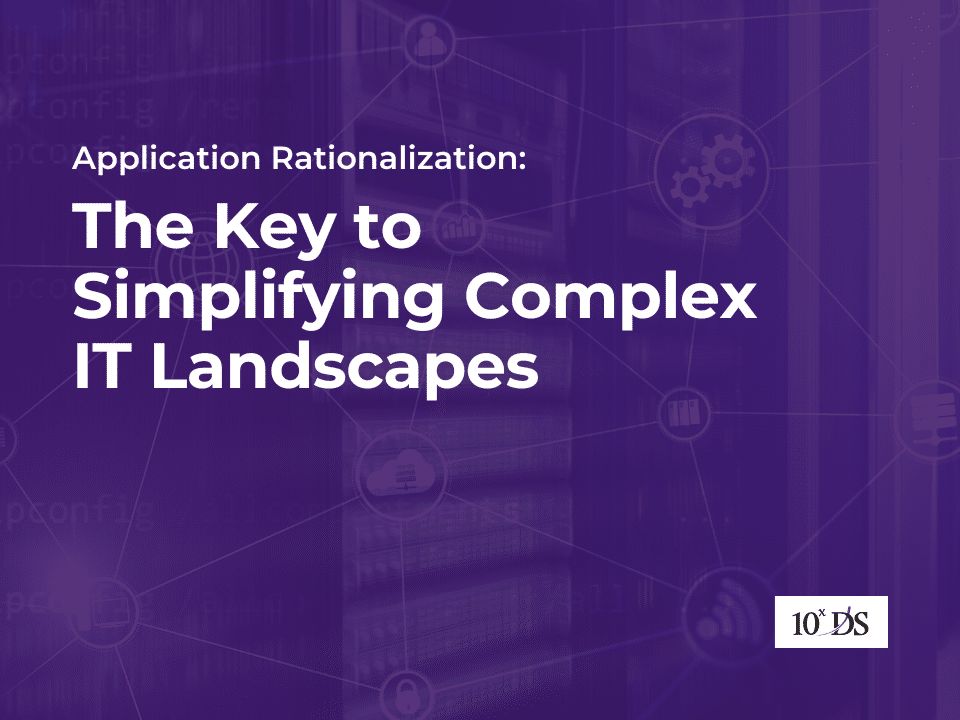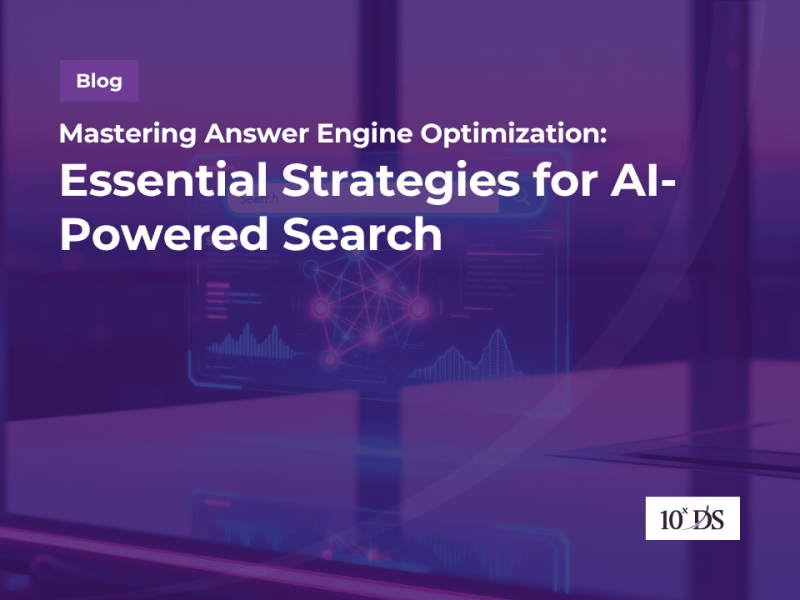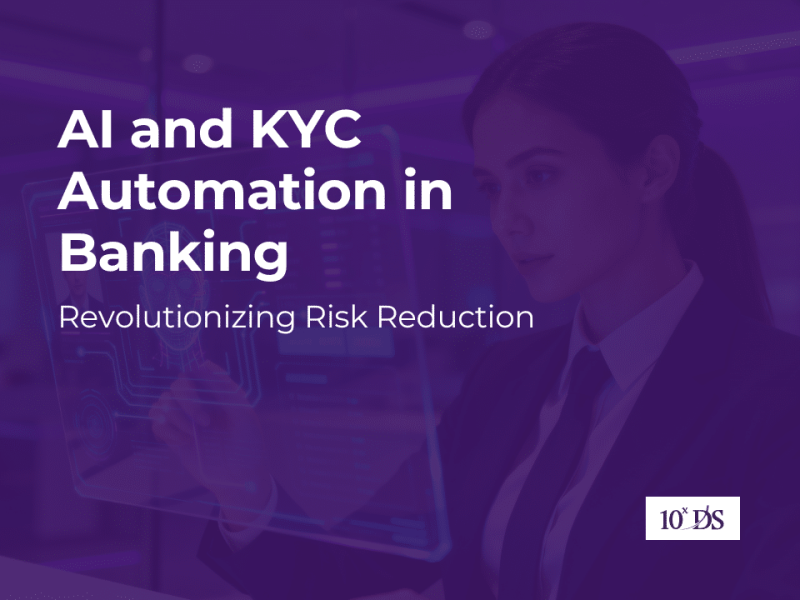
Application Rationalization: The Key to Simplifying Complex IT Landscapes
Imagine a mid-sized financial services company that has grown rapidly through mergers and acquisitions but never established a proper IT program about the software and systems in use. Over the years, each acquired entity brought its own set of software tools, resulting in a bloated IT landscape with overlapping systems – multiple CRM platforms, redundant project management tools, and several versions of the same productivity software. Without centralized oversight, departments independently purchase and maintain their own applications, leading to fragmented data, inconsistent processes, and duplicated licensing costs.
IT struggles to maintain all these systems, with many applications outdated, unsupported, or rarely used. Security becomes a major concern as some legacy applications lack patches or vendor support, increasing the organization’s vulnerability to cyberattacks. Employees waste time switching between tools or manually reconciling data across platforms, reducing productivity and increasing operational friction. When the organization attempts to launch a digital transformation initiative, it’s slowed down by integration issues, lack of visibility into existing assets, and resistance from users attached to legacy systems. This clearly brings out the need for structured framework which can be achieved through an application rationalization program. Without a clear rationalization framework, decision-makers are unable to prioritize effectively, leading to rising costs, technical debt, and missed strategic opportunities.
What is application rationalization?
Application rationalization is the structured process of evaluating and optimizing an organization’s software portfolio to eliminate redundancy, reduce costs, enhance performance, and align technology with overall business objectives. It involves analyzing all existing applications to determine their usage, value, costs, and dependencies, and making informed decisions about which applications to retain, consolidate, upgrade, or retire. The primary goals are to lower IT expenses by eliminating duplicate or underutilized software, streamline operations through a simplified and more efficient application landscape, and improve security by identifying and removing outdated or unsupported systems that pose risks. Additionally, application rationalization supports digital transformation efforts by ensuring that only modern, scalable, and strategically aligned applications are maintained, enabling the organization to be more agile, competitive, and responsive to changing market demands.
Typical Steps in the application rationalization process:
1. Inventory all applications
The first step in application rationalization is to create a comprehensive inventory of all applications currently in use across the organization. This includes documenting each application’s name, version, vendor, purpose, business owner, technical owner, number of users, licensing details, and hosting environment (on-premise or cloud). It’s also essential to gather data on actual usage, integration points with other systems, maintenance requirements, and dependencies. This baseline inventory forms the foundation for analysis and helps identify duplicates, redundant tools, and orphaned applications that no longer serve a purpose.
2. Assess business value and technical fit
Once the inventory is complete, each application must be evaluated to determine how well it supports the organization’s objectives and how technically sound it is. This involves assessing business value—how critical the application is to day-to-day operations, compliance, customer service, or competitive advantage—as well as technical factors such as reliability, scalability, performance, security, and vendor support. Stakeholder input is crucial in this step, especially from business units and IT teams. Applications that score poorly in both areas are prime candidates for elimination or replacement, while high-value, technically sound applications may be prioritized for retention or modernization.
3. Categorize and prioritize
Based on the assessment, applications are categorized into four main groups: retain (keep as-is), rehost or replatform (move to a better-suited environment), replace (with a more effective solution), or retire (eliminate entirely). Some organizations also use additional categories like consolidate (merge overlapping applications) or modernize (upgrade legacy applications). Prioritization should be guided by factors such as cost savings potential, security risk, business impact, and ease of implementation. This step helps focus efforts on high-value opportunities and prevents spreading resources too thin across the portfolio.
4. Execute changes
With a clear plan in place, the organization can begin executing the rationalization initiatives. This may involve decommissioning obsolete applications, migrating data, training users on new systems, renegotiating software contracts, or implementing new tools. Change management is critical here—clear communication, adequate support, and involvement from end users help ensure adoption and minimize disruption. A phased approach is often best, starting with low-risk or high-reward changes to build momentum and demonstrate value before tackling more complex transitions.
5. Monitor and iterate
Application rationalization is not a one-time project but an ongoing process. As business needs evolve and technology advances, the application portfolio must be continuously reviewed to ensure alignment with organizational goals. Establishing regular review cycles—such as annually or semi-annually—helps maintain visibility, control costs, and prevent software sprawl. By embedding rationalization into IT governance and decision-making processes, organizations can stay agile, efficient, and ready to adapt to new challenges and opportunities.
Setting up an organization easy for application rationalization
Setting up an organization to be ready for application rationalization from the start ensures long-term efficiency, agility, and cost-effectiveness in managing software assets. By establishing clear governance, standardized processes, and centralized visibility over applications early on, organizations can avoid the common pitfalls of software sprawl, redundant tools, and unmanaged licensing costs. It enables better decision-making when acquiring or developing new applications, as every addition to the portfolio is evaluated against defined criteria and business needs. This proactive approach also reduces future complexity, making it easier to adapt to evolving technologies, regulatory requirements, and organizational changes. Ultimately, designing with rationalization in mind from the beginning fosters a lean, secure, and strategically aligned IT environment that supports business growth and innovation.
To set up an organization for easy application rationalization from scratch, begin by establishing clear IT governance and a centralized system for managing software assets. Implement an enterprise architecture framework that mandates standardized documentation of all applications, including ownership, purpose, cost, usage metrics, and integration points. Use an application portfolio management (APM) tool or maintain a living inventory in a centralized database or CMDB. Design policies that enforce justification for new software acquisitions and mandate periodic reviews of existing applications. Foster collaboration between IT, finance, and business units to ensure alignment on business value and technical needs. From the outset, emphasize simplicity, interoperability, and scalability in software choices, and maintain a culture of continuous evaluation and optimization to prevent redundancy and technical debt.
A real-world case study
A case study shared by APPTIO, an IBM company shows how Cargill, a global leader in food and agriculture, has effectively implemented an application rationalization program as part of its broader IT transformation strategy. By integrating Technology Business Management (TBM) principles, Cargill gained enhanced visibility into its IT expenditures and application portfolio. This initiative enabled the company to identify redundant and underutilized applications, leading to significant cost savings and operational efficiencies.
Through this rationalization effort, Cargill successfully decommissioned numerous applications, streamlining its IT landscape. The company also optimized its server allocation, which alone resulted in a $5 million cost reduction. Overall, these measures contributed to more than $20 million in savings over two years. This case exemplifies how a structured approach to application rationalization, underpinned by robust governance and financial transparency, can drive substantial business value.
Conclusion
Now that we realize the importance of application rationalization, bringing it into practice is the next step. If application rationalization was not considered from the start, an existing organization can still prepare by first gaining full visibility into its current software landscape through a thorough inventory of all applications across departments. This includes collecting data on usage, costs, business value, ownership, technical health, and dependencies. Establishing cross-functional governance—bringing together IT, finance, procurement, and business stakeholders—is essential to drive accountability and align decisions with organizational goals. A centralized system such as an Application Portfolio Management (APM) tool or CMDB should be implemented to manage and maintain application data consistently. Next, clear evaluation criteria and classification methods (e.g., retain, retire, replace, consolidate) should be defined. Communication and change management are also critical—educate stakeholders on the benefits of rationalization and address resistance. With this foundation, the organization can begin a phased approach to rationalization, starting with high-cost or high-risk applications, while embedding ongoing portfolio reviews into the IT and business strategy.
Talk to our experts to learn more.


